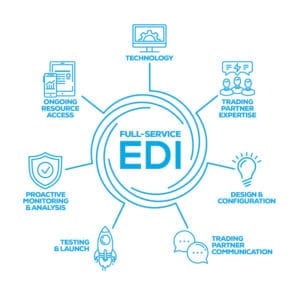Retailers: Sharing data with suppliers brings savings and growth
When it comes to sharing sales data, many retailers like to play things close to the vest, refusing to share with others. The data is proprietary, they don’t want the competition to see how they’re doing, they want to get paid for sharing data, or they just don’t see the benefit of telling their suppliers how well their products are performing.
These are unwise decisions to make, because there are a number of positive benefits that come from retailers, vendors and manufacturers sharing data with each other.
Mutual data sharing finds new insights
For one thing, retailers might have some data about the products that the suppliers might not have, and the suppliers might have some insights into the products that the retailers don’t have.
Among the groups, the retailers and the vendors or brands can both make better assortment and product offering choices, which ultimately lead to more sales.
For example, a vendor will know how their product is performing across all of their sales channels — not only at the retailer’s stores, but all their competitors. And what if the vendor had an important insight like, “Product X sells 20 percent more when it’s placed next to Product Y” or “Product X sales increase by 35% in the two weeks leading up to Spring Break.”
As a retailer, wouldn’t you want that valuable piece of information? That you could boost sales by placing one product next to another, and showcasing it in the first two weeks of March? You get that by sharing your sales data and receiving your vendors’ sales insights in return.
Sharing data can aid inventory strategy
Data sharing can also impact your inventory strategy. You may qualify for bulk savings and discounts if you order in larger quantities, especially if you knew that a peak sales period was coming up. It can also help you reduce stale merchandise and overstocks on things that don’t sell as well, or only appeal to a smaller niche.
By sharing data with your suppliers, they can again see how their products are performing across all sales channels and they can provide you with better, more complete insights about the items you should increase or reduce on your next order.
Shared data can help identify problems
We talk about this story quite a lot, but one of our clients had a product that was selling well in every single store in a particular region, except for one store, which hadn’t sold anything. The supplier got in touch with the retailer’s buyer who did a little investigating and found that the product was still in the warehouse and not out on the floor. They were able to get the items onto the store shelves, and sales performance was soon matching the other stores.
Now, this is not necessarily something the retailer would have caught, other than to see in their own sales data that the product didn’t sell. But because the vendor was able to see all the sales from all their retail partners, they were able to quickly identify the problem.
Sales data can impact promotions
Have you ever geared up to launch a promotion only to discover there was a shortage of the product line you were about to promote? Vendors and manufacturers will often run programs, such as a special rebate or offer, based on the number of items they know they have left in their inventory. But they can’t run it if they don’t know whether a particular retailer has a shortage of items or is sitting on the lion’s share of the inventory.
But it’s not a revenue stream
We’ve heard from some retailers who think they should sell their data back to their vendors, as a way to turn it into a revenue stream for the retailer.
We cannot advise against this strongly enough!
Remember, the whole point of sharing data is to benefit you and to increase your sales. This is an opportunity multiplier. What if every vendor could show you how to improve sales of their products by 5 percent, or reduce costs by 5 percent? What would that mean for your store?
Charging someone for the ability to help you increase your own sales is short-sighted and will result in more missed opportunities that will no doubt outweigh the money made from charging for data sharing. Share willingly and freely to the vendors who are able to help you analyze your sales data.
It’s also not difficult
We’ve heard some retailers express worry that sharing data requires a lot of manual data entry, and that it’s hard to break down the organizational silos and get everyone to play nicely and share.
This is where a good EDI system can break down the silos by integrating all order and product data into a single system. This also eliminates manual data entry. POs are generated (often automatically, based on low inventory levels), PO acknowledgements are sent, as are advanced shipping notifications, packing lists, and invoices. The only time a human gets involved is if there are discrepancies between what was ordered and what was received.
The EDI system also helps keep track of point-of-sales data and can streamline the sharing of the data downstream (and upstream), which can then be analyzed by both the vendor and the retailer, often using the very same analytics package available in the EDI system.
SPS Commerce’s various cloud-based solutions — EDI, analytics, etc. — can help retailers, suppliers, and manufacturers to not only streamline their ordering process, it can help them understand sales data, find trends and patterns, identify problems and successes, and help everyone do their job more effectively and efficiently.
If you would like to learn more about the SPS Analytics solution, ask to speak to one of our analytics experts to answer your questions.

Find the correct EDI solution for your business.
Get more insights on full-service EDI by downloading our white paper.
READ OUR WHITE PAPER- The importance of big data in retail - December 14, 2022
- What is Supply Chain Demand Planning? - March 2, 2022
- Why Merchandising Matters for Suppliers - February 3, 2021

RELATED POSTS
How to tame volatile manufacturing su...
How to build an agile supply chain in...
How suppliers can align to retailers�...